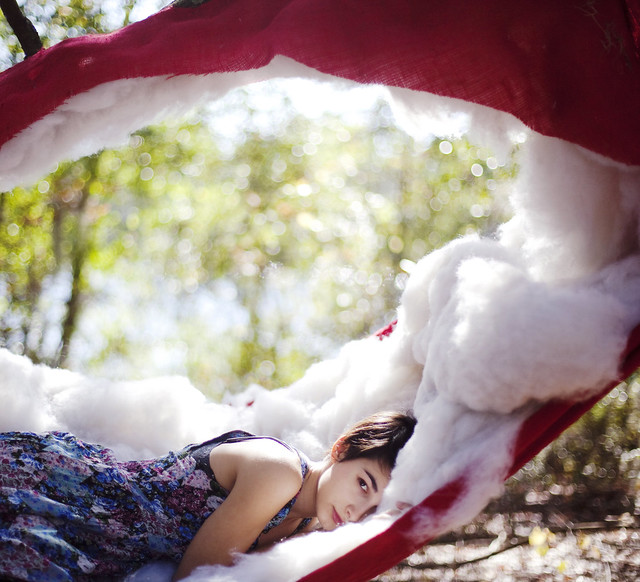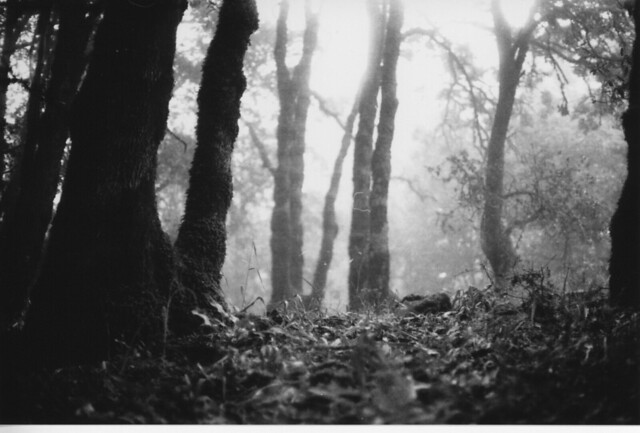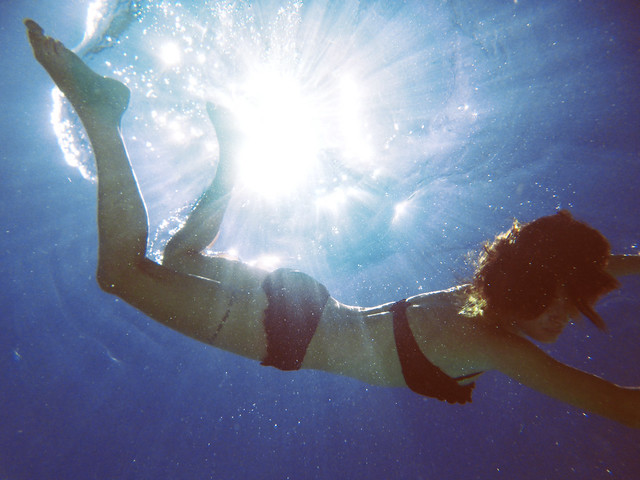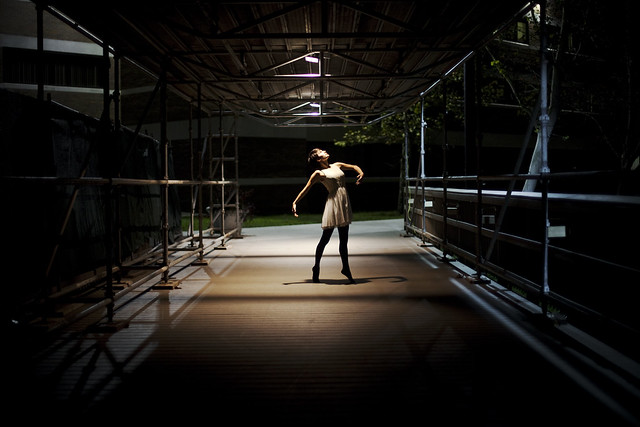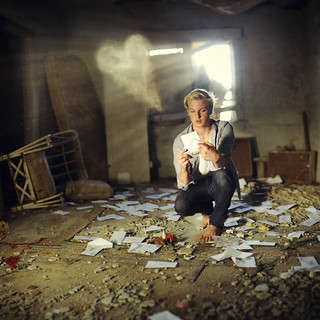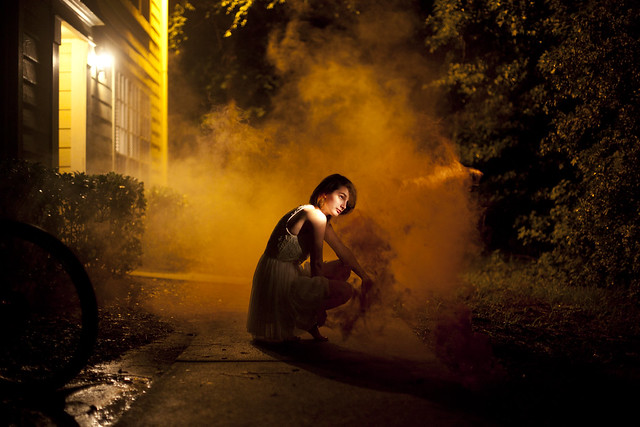 Today we meet alexis mire in Jacksonville, FL, USA who is a photography student at the University of North Florida. She is currently working on her second 365 project and recently got featured in Popular Photography magazine (more about this later).
Today we meet alexis mire in Jacksonville, FL, USA who is a photography student at the University of North Florida. She is currently working on her second 365 project and recently got featured in Popular Photography magazine (more about this later).
Here is some of what others say about Alexis:
"Every photo Alexis uploads is inspiring. Not just to me, but to all who have the pleasure of viewing her stream." – shanon wise
"Alexis takes absolutely beyond incredible photos and I really can’t see how there can be a ceiling to her talent. Every upload is really, really amazing." – *Imogen
"Lexi is the definition of a photographer–someone who perfectly captures moments with a raw intensity that is virtually impossible to explain. […] Lexi is always trying something new, fresh, interesting, and, frankly, amazing […], and I love how she can go from a still-life, to a self-portrait, to a model portrait, to film, taking beautiful photo after beautiful photo and, all the while, stringing together a coherent style that is very unique and original to herself." – voldy92
Alexis, have you always been an avid photographer or was there some trigger?
I started out my photography at a young age shooting profile pictures for myspace (yes we all did it, no shame). I would get together with my friends and we would get all dressed up and go on photoshoots with silly props and ridiculous make up, then we would return home and narrow it down to that one perfect photo. Well, we grew out of myspace eventually and my friends grew out of the photoshoots but I was still enthralled by the act of taking photos and the things I could create with a basic little camera. I wanted more.
 My real trigger, I don’t mean to sound sappy but it’s the complete truth, was Flickr. A friend of mine introduced me to the site in 2007 and I joined in June of that year (wow it’s been over five years, that’s insane). At first I did the basic stuff, I browsed and joined groups and played around. I took pictures of the sky and the grass and my feet and posted all of those myspace profile pictures. It was all pretty innocent and silly. I left Flickr for a bit but then returned when my friends had lost interest and it became more personal for me. It was then that I came across the work of three photographers that really changed my idea of picture taking and turned it into an interest in photography.
My real trigger, I don’t mean to sound sappy but it’s the complete truth, was Flickr. A friend of mine introduced me to the site in 2007 and I joined in June of that year (wow it’s been over five years, that’s insane). At first I did the basic stuff, I browsed and joined groups and played around. I took pictures of the sky and the grass and my feet and posted all of those myspace profile pictures. It was all pretty innocent and silly. I left Flickr for a bit but then returned when my friends had lost interest and it became more personal for me. It was then that I came across the work of three photographers that really changed my idea of picture taking and turned it into an interest in photography.
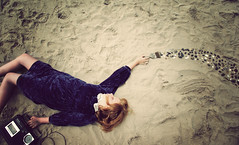 The first was Jacqueline Rivera, known as Shes_Jack on Flickr. I came across her in the midst of her 365 when she was creating these insanely beautiful manipulations unlike anything I had seen before. At this point, I (shamefully) thought Photoshop was a place, not a software. She blew my mind with levitation, short depth of field and beautifully lit images. I was amazed and low and behold, she was my age. It’s so hard to describe that feeling of pure inspiration, but that’s what she gave to me. A raw need for art making.
The first was Jacqueline Rivera, known as Shes_Jack on Flickr. I came across her in the midst of her 365 when she was creating these insanely beautiful manipulations unlike anything I had seen before. At this point, I (shamefully) thought Photoshop was a place, not a software. She blew my mind with levitation, short depth of field and beautifully lit images. I was amazed and low and behold, she was my age. It’s so hard to describe that feeling of pure inspiration, but that’s what she gave to me. A raw need for art making.
 After her, I ran into the world of Olivia Bee and Eleanor Hardwick (initially known as Lenaah) and that’s really when everything changed. These were girls not only my age, but younger than me, who were creating these whimsical, editorial photographs in unknown places that were so pure and unique. They were making photos to make them, they had costumes and were planning ahead. They were making magic and I was exposed to that at the perfect time in my life and that is something that I will never be able to repay them for.
After her, I ran into the world of Olivia Bee and Eleanor Hardwick (initially known as Lenaah) and that’s really when everything changed. These were girls not only my age, but younger than me, who were creating these whimsical, editorial photographs in unknown places that were so pure and unique. They were making photos to make them, they had costumes and were planning ahead. They were making magic and I was exposed to that at the perfect time in my life and that is something that I will never be able to repay them for.
After that my photography became a personal challenge, to be better and better and to be the one who inspires people the way they inspired me. I feel like I owe the world to Flickr and to them, I don’t know if I could ever be the person I am without it.
Do you have any professional background or are you self-taught?
I was completely self taught with my digital photography for the first four years, it has only been in the past year and a half that I have taken college level classes on photography to learn about studio lighting and advanced Photoshop techniques. But before any of that I learned through trial and error, a few online tutorials and the helpful assistance of my boyfriend Ryan Jay. He also taught me the ins and outs of medium format film and helped me learn about 4×5 film. A boy who knows all there is to know about cameras, what a catch!
As far as film goes, I took courses during high school to learn about processing black and white film and printing in the darkroom and furthered my knowledge at college with intermediate film courses.
What did get you started on self-portraiture?
I did self-portraiture from the very beginning, especially after I was left alone with my photography.
Although I was interested in photographing other people, I was very shy to ask them to model for me, and I felt like they wouldn’t really understand what I wanted out of my photos. I just had a lot of trouble expressing myself orally about photography, especially because no one really understood why I did it in the first place. It was like my weird hobby that was silly, but people humored me and that was the extent of it.
I found that self-portraits were not only easier to do conceptually (no need to explain strange stories to strangers) but they were very convenient because I am always around and available for a 365 photo (obviously). It started out because I was shy and because it was easy, but it developed into something much more personal and intimate as I got older and really became familiar with the process. I made it my own and it’s something I have only shared with a few select people because it is almost sacred to me.
I knew self-portraits were meaningful when I would really get into the zone taking photos, I mean forgetting to breathe for long periods of time, running back and forth to my camera blindly, dunking myself in freezing cold water telling myself, just one more shot, just one more. That element of a personal challenge that photography first gave me radiates in my self-portrait work. That adrenaline rush I get when I know, for a fact, that I am making a beautiful image cannot be defeated by anything, ever.
What is your gear?
I primarily shoot with a Canon 5D Mark II, and my go to lenses are the Canon 50mm f/1.4 and the 28mm f/1.8. I also dabble a little in film with a Mamiya RB67 with 120 film and an instant Fujifilm back, a Canon AE-1 (for 35mm) and a Burke and James 4×5 with a Fujifilm instant back. I also use a remote for my self-portraits. With film I prefer low speed films (100-400), and I always shoot on manual with my digital camera on the smallest aperture possible.
Are you using any DIY utensils or repurposed equipment?
I do use a few things that are out of the norm, the first is my 4×5 camera. The 4×5 I have was not made to use the Fujifilm instant back so the slot where the back should go in was slightly too small. In order to work around this problem Ryan lined the camera back and the film back with velcro. He also detached the viewing glass and lined that with velcro so the Fujifilm back and the glass are interchangeable. I look through the glass, find my focus and then attach the film back and shoot! I also like to repurpose old lens filters to create a smokey, hazy effect on images by smearing them with hair gel, Neosporin, vaseline and lots of other products that make them blurred but not quite impossible to see through.
Are there photographers or groups on Flickr that inspire you?
Right now I am really interested and inspired by many different types of work. I want to go in so many different directions all at once so my inspiration is all across the board but I’ll touch on a few random photographers.
Along with the three ladies I mentioned earlier, Mike Bailey-Gates was one of the first photographers I came across and I am constantly envious of his ability to plan and scheme to create these magical compositions without the help of Photoshop. He plans, collects props and creates characters out of his friends and himself. It’s just remarkable, really.
On the other end of the spectrum are the young and upcoming manipulation photographers such as Alex Stoddard, David Talley and Sarah Ann Loreth. I think my fascination with Jacqueline Rivera’s work has stayed buried inside of me and is resurfacing as a love for these photographers and many of their friends. They have the ability to create these seamless compositions through image manipulation that are striking, frightening and always incredibly gorgeous. From wonderful photos they make unbelievable works of art. I am always overwhelmed by their talent with post processing and I would love to be on their level one day. Young photographers in general just make me so giddy and appreciative, youthful art is so pure and innocent. So meaningful. I have so much respect for the kids who are growing up with cameras in their hands, because there’s no other way to do it in my opinion.
How did Popular Photography "Puff Stuff" article come to be and what was your experience working with them?
My "Puff Stuff" article started when Peter Kolonia, the Senior Editor of Popular Photography, contacted me by email about his reoccurring article, "You Can Do it!" He had spotted my image somewhere in the photography universe, although he didn’t mention where, and wanted to know more. I have a sneaking suspicion that it was Flickr.
Peter asked if I’d like to participate, and I was really overjoyed. He chose the image that was featured because he felt it would make for a perfect DIY prop for other aspiring photographers. Through a series of questions and interviews we developed a ‘how to’ and a small summary about my work, how the cloud came about and what inspired it.
After these initial things, I worked with a few people on the team: It was really interesting to see how the article went through a process within the magazine. That it wasn’t just slapped onto a page and sent to press, it was really cared for and looked after by many people. Once it was out of Peter’s hands it moved to someone else who made corrections, checked facts and double checked with me that all was accurate. It was so amazing to see the magazine as a living, breathing machine rather than just a finished product. Plus, everyone I worked with was extremely kind and patient with me, seeing as it was my first time in a large publication.
Overall it was great opportunity and I am beyond thankful that they chose me. I really hope to work with the team in the future because I owe them a lot for all of their kindness and hospitality.
Before we wrap up, do you have a "secret ingredient" for taking self-shots?
One of the main secret ingredients for self-portraits is just practice (okay maybe that isn’t a secret) but really the more you do it, the better you become. You have to learn your body, your personal angles and poses, what you can express with different actions. You have to play with your body language, your facial expressions and your appearance. One of the most important things to do when taking self-portraits is to be patient with yourself and try to see beyond the personal insecurities, the flaws that we always see in ourselves, and look at the bigger picture (literally and figuratively). Self-portraits can be a pathway to acceptance and self loving, but you can’t let it be the path to self loathing and discomfort.
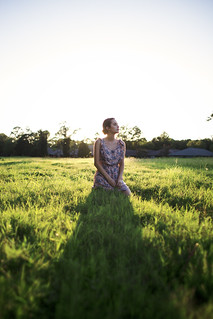 I think a lot of people struggle with that and those problems go much deeper than photography and art, they go into another place in the soul. It is extremely hard to make a photo of yourself and not see more than yourself, but I think with time and practice it becomes less about you and more about the idea, the concept, the act of expression and creation. The biggest thing—always, always—is to create shamelessly. Be yourself in your art and love yourself in your art, it’s a part of you that you’ve set out into the world and you should do so proudly. Eventually for me, self-portraits became less about the final product and more about the process itself. It became self-portrait therapy, which is a phrase I’ve sort of coined in the Flickr world. I feel proud that people use it and can feel like it applies to them. Creating should be therapeutic, natural and where you feel most like yourself.
I think a lot of people struggle with that and those problems go much deeper than photography and art, they go into another place in the soul. It is extremely hard to make a photo of yourself and not see more than yourself, but I think with time and practice it becomes less about you and more about the idea, the concept, the act of expression and creation. The biggest thing—always, always—is to create shamelessly. Be yourself in your art and love yourself in your art, it’s a part of you that you’ve set out into the world and you should do so proudly. Eventually for me, self-portraits became less about the final product and more about the process itself. It became self-portrait therapy, which is a phrase I’ve sort of coined in the Flickr world. I feel proud that people use it and can feel like it applies to them. Creating should be therapeutic, natural and where you feel most like yourself.
I know this response got a little heavy, so let me throw in a few more tips rather than deep intellectual concepts:
I always use a tripod and a remote for my self-portraits for the best possible angles, focus and composition. When shooting using a remote it becomes much easier to autofocus on yourself rather than setting a random focus, hitting the 10 second timer and hoping for the best. Also, if you feel comfortable, maybe bring an assistant along with you to stand in for you to focus or to shoot for you if you don’t have access to a remote or a tripod. Also, I think mace is an important ingredient as well. If you’ll be wandering alone in strange places (which I know you will be) it’s important to always stay safe. I know your tripod can be used as a weapon if it comes down to it, but it’s best to have more specialized protection.
Alexis, thanks for taking the time to share your story with us. We will be back soon with the next interview.
Photos from alexis mire, shes_jack, olivia bee, Eleanor Hardwick, alexstoddard, Mike Bailey-Gates, David Talley, and Sarah Ann Loreth.
